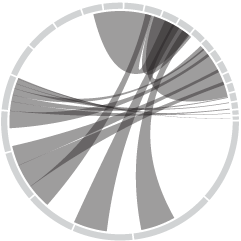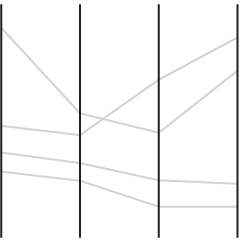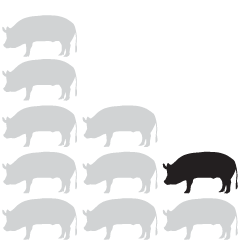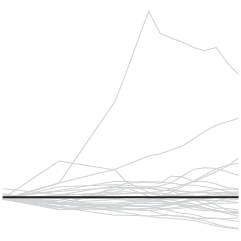“Do or do not. There is no try.” — Yoda [via]
-
National Geographic has a look at where and how we live:
The map shows population density; the brightest points are the highest densities. Each country is colored according to its average annual gross national income per capita, using categories established by the World Bank (see key below). Some nations — like economic powerhouses China and India — have an especially wide range of incomes. But as the two most populous countries, both are lower middle class when income is averaged per capita.
It’s interesting, but the map is a little wonky, because the income levels and population densities differ in granularity. It kind of works. Kinda doesn’t. There seems to be a lot of missing data — or does population density in northern Africa really drop off that quickly (it is desert land, albeit)? A little more explanation in the description or the legend would have been useful.
Read More -
 A few months ago, a packed crowd gathered in Minneapolis for the Eyeo Festival to hear some of the best in data art, visualization, and creative code talk about what they do and how they do it. I didn’t get a chance to go, but from all the chatter online during the event (and the stellar speaker lineup), I get the sense I missed something good. Luckily, some of the talks are available online.
A few months ago, a packed crowd gathered in Minneapolis for the Eyeo Festival to hear some of the best in data art, visualization, and creative code talk about what they do and how they do it. I didn’t get a chance to go, but from all the chatter online during the event (and the stellar speaker lineup), I get the sense I missed something good. Luckily, some of the talks are available online.For starters, Ben Fry and Casey Reas talk about Processing, their grad school grown programming language; Aaron Koblin presents some of the work from the Google Data Arts team; and Nicholas Felton discusses the process behind his annual reports.
Catch a few more on the Eyeo Vimeo channel or to stay updated for when new videos are uploaded.
-
This is totally sunshine and lollipops, but it has a good flow to it, and well, I totally wanted to know more about BBC Knowledge. Too bad it’s not available in my region that is America.
[Video Link via datavisualization]
-
We do not provide these tables in Excel or CSV format. You will have to cut and paste from the pdf.
— A government group that provides a lot of dataIf you’re going to provide a dataset to the public, or anyone for that matter, please don’t use PDF as your one and only format. At the very least, provide it in Excel. You can easily export spreadsheets to PDF. I don’t hold anything against the person who sent me this message. She was just doing her job. But organizations need to get with the times and provide data in a way that is actually usable.
-
In a follow-up to his ever popular McMap that showed distance to the nearest McDonald’s in the United States, Stephen Von Worley does the same for the United Kingdom and Ireland.
Read More -
Not many people ride the train anymore, but a lot of inventory is still moved via freight. It turns out that 90 percent of that freight market belongs to just four companies in the country, and since deregulation in the 1980s, the number of total railroads has gone down from 50 to just 7. Nicolas Rapp, graphics director at Fortune Magazine, explains. The railroad coverage maps are interesting, too.
-
With Breast Cancer Awareness Month coming up in October, data visualization firm Periscopic teamed up with GE to explore the conversations about breast cancer on Twitter. Yes, believe it or not, people actually talk about other things besides Justin Bieber with the service.
Read More -
Martin Dittus, a former Last.fm employee, grabbed listening data for staff, moderators, and alumni, and visualized 8.7 million scrobbles in an extended calendar format.
Read More -
If you’re good with data and looking for a job, you’re in luck. There seem to be quite a few jobs out there. Here are a handful of positions that have showed up on my radar recently.
SENSEable City Lab at MIT — “The SENSEable City Laboratory is seeking exceptional candidates to fill positions involving research on the process of data visualization. Candidates should have a sound experience in the process of visualizing data both in static as well as dynamic form.”
Front-end Engineer at GeoIQ — “[Y]ou will be a key member of our growing platform engineering team building dynamic, interactive visualizations, maps and mobile applications. You will be working directly with our JavaScript and ActionScript components to create compelling interfaces that use cutting edge technology and web standards.”
Front-end Developer at Periscopic — “A passion for dealing with data, making sense of large amounts of disparate information, or statistical analysis would be lovely.”
Stamen Developer — “You’re excited by the possibility of cutting and bending data to fit it through the thin straw of the internet. You can look at a source of information and model it as resources, rows and columns, messages and queues.”
News Developer Jobs — A pretty good list started by Matt Waite that others can edit. Includes openings at the Chicago Tribune, New York Times, Boston Globe, and others.
Got a job you need to fill? Feel free to post it in the forums.
-
My many thanks to the FlowingData sponsors. I had to upgrade my server for the second time this year, so without these fine groups FlowingData would be a blank screen with a progress wheel most of the time. Check them out below. They help you make sense of and tell stories with data.
InstantAtlas — Enables information analysts and researchers to create highly-interactive online reporting solutions that combine statistics and map data to improve data visualization, enhance communication, and engage people in more informed decision making.
IDV Solutions Visual Fusion — Business intelligence software for building focused apps that unite data from virtually any data source in a visual, interactive context for better insight and understanding.
Tableau Software — Combines data exploration and visual analytics in an easy-to-use data analysis tool you can quickly master. It makes data analysis easy and fun. Customers are working 5 to 20 times faster using Tableau.
Column Five Media — Whether you are a startup that is just beginning to get the word out about your product, or a Fortune 500 company looking to be more social, they can help you create exciting visual content – and then ensure that people actually see it.
Want to sponsor FlowingData? Send interest to [email protected] for more details.
-
-
With Girl Scout cookie season around the corner, Wired pies it up with cookies showing percentage of sales. It’s all about the Caramel deLites. [Thanks, Elise]
-
This Sunday will be 10 years since the attacks on September 11. Amanda Cox and Shan Carter of The New York Times look at the financial tally, an estimated $3.3 trillion:
Al Qaeda spent roughly half a million dollars to destroy the World Trade Center and cripple the Pentagon. What has been the cost to the United States? In a survey of estimates by The New York Times, the answer is $3.3 trillion, or about $7 million for every dollar Al Qaeda spent planning and executing the attacks. While not all of the costs have been borne by the government — and some are still to come — this total equals one-fifth of the current national debt. All figures are shown in today’s dollars.
A single cube in each stack represents $1 billion. The initial view is money spent in five categories. Click on any stack for a subcategory breakdown. Sobering.
[New York Times via @shancarter]
-
In college, I was one of those guys who sat in the back and doodled in my notebook. Sometimes I fell asleep. One time I fell asleep and woke up in the middle of a different class. I blame the professor. Why would you turn off the lights for a two-hour session in a big lecture hall, while reading verbatim from world’s most boring powerpoint presentation?
Anyways, we all have our seating pockets that we like to settle in. Skyrill, a two-brother design team, took it upon themselves to visualize the seating habits of their graduate student classmates in class 15.514 at MIT.
Read More -
Kiva, the microfinance site, lets you give small loans to people around the world to help them get their small business up and running. This animated map shows how 620,000 funded 615,000 borrowers, from the start of Kiva in 2005 up until now. Watch in full-screen for maximum effect.
Colors indicate loan type, which confused me at first, because I thought the map was saying that specific loan types were only given out during each time of year. It’s actually cycling through the loan types though, so you can see the breakdowns as the animation plays through, and then it shows all loans at once at the end of each year.
The only thing that’s missing are some counters for the amount of money passing hands. It’s been an impressive $240 million in loans around the world with a repayment rate of almost 99 percent.
[Thanks, Andy]
-
In celebration of Chrome’s third birthday, Google teamed up with Hyperakt and Vizzuality to explore the evolution of the Web:
Over time web technologies have evolved to give web developers the ability to create new generations of useful and immersive web experiences. Today’s web is a result of the ongoing efforts of an open web community that helps define these web technologies, like HTML5, CSS3 and WebGL and ensure that they’re supported in all web browsers.
The black timelines show major browser releases. As you click each browser icon, you can see how the browser window has changed for each release, which I think is the most interesting part of the interactive.
Color bands represent browser technologies such as JavaScript, HTML, and Flash, and the bands grow as new browsers integrate the technologies. The intertwining of bands is supposed to show the interaction between different technologies, but it gets fuzzy here. Does the vertical position of bands mean anything? Does shape mean anything, or is it more for show? I think it’s a little of both. More the latter. Fun to poke around memory lane either way.
[Thanks, Deroy]
-
I know most of you have checked out mentally for Labor Day weekend, so here’s some fodder to help you through the rest of the work day, as you dream of steak, burgers, and cold beer.
- Price of weed
- Flowchart: Should you argue on the Internet?
- Bikes of San Francisco
- The Sexperience 1000 shows a (statistical) view of what goes on in the bedroom
- Who owns the beer
- Rethinking the food nutrition label
- Statistics PhD wins lottery four times
- Mobile patent lawsuits
- US post offices spreading over time, 1700 to 1900
- People moving
Thanks for a great month and have a nice long weekend.
-
In case you’re wondering whether you should be drinking in that local park (you know, the one with the horsey and swings) this weekend, Jen Cotton for Grubstreet New York offers this guide. [Thanks, Ben]
-
Slate places cartoon characters from past and present within the frame of a color wheel.
Why are the Smurfs blue? Why is Doug’s Beebe Bluff purple? Our aim is not to answer these existential questions. When asked why the Simpsons are yellow, Yeardley Smith (voice of Lisa) explained only that Matt Groening “thought that it would be really funny if, when people watched The Simpsons, they thought that maybe the color on their TV was off.”
Totally ridiculous. And that’s what makes it fun.
[Thanks, Dean]

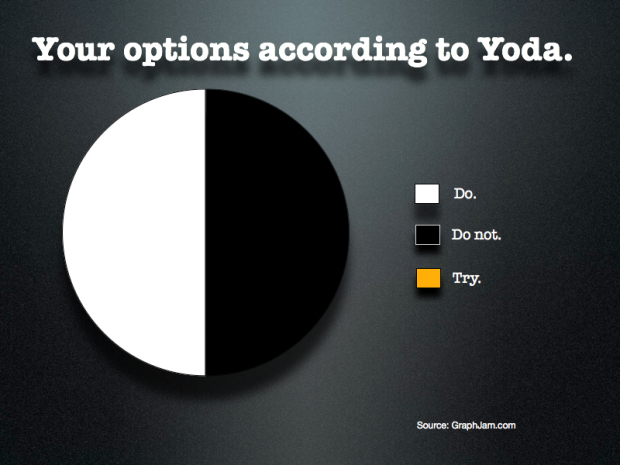
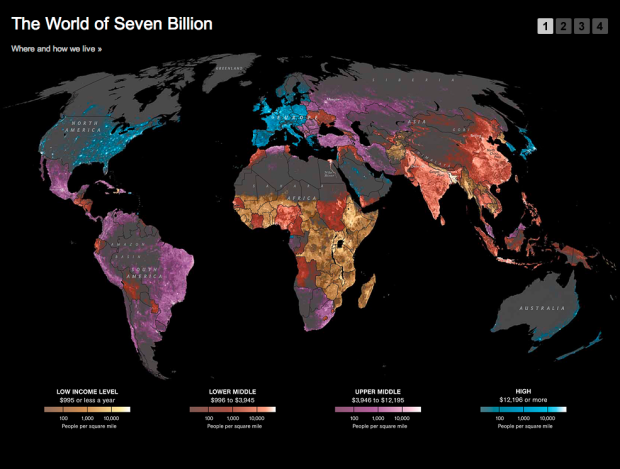

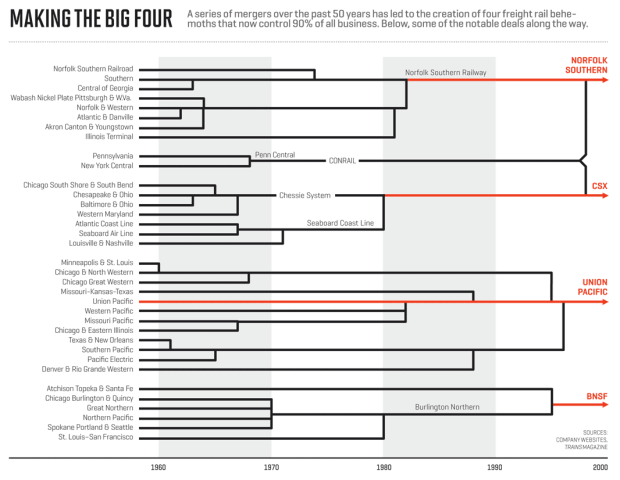
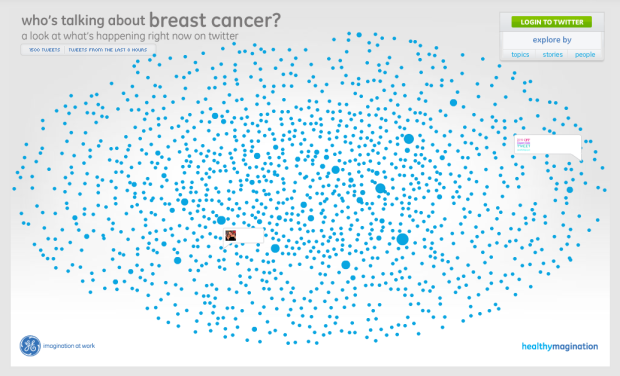
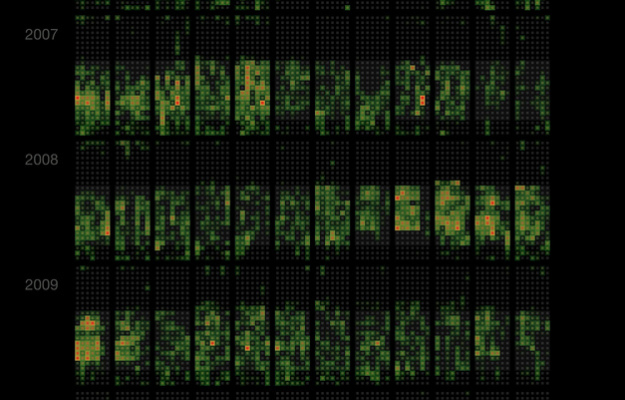
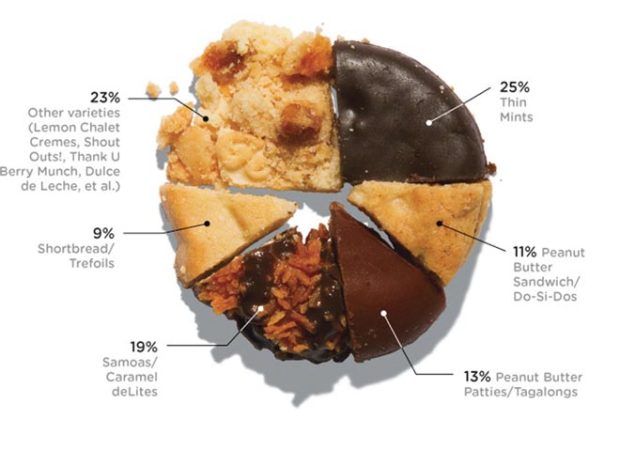
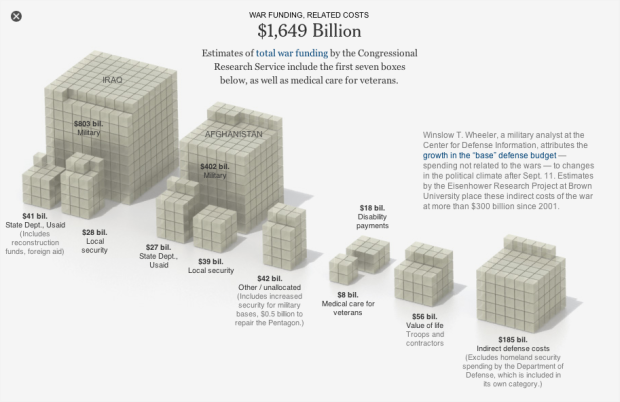



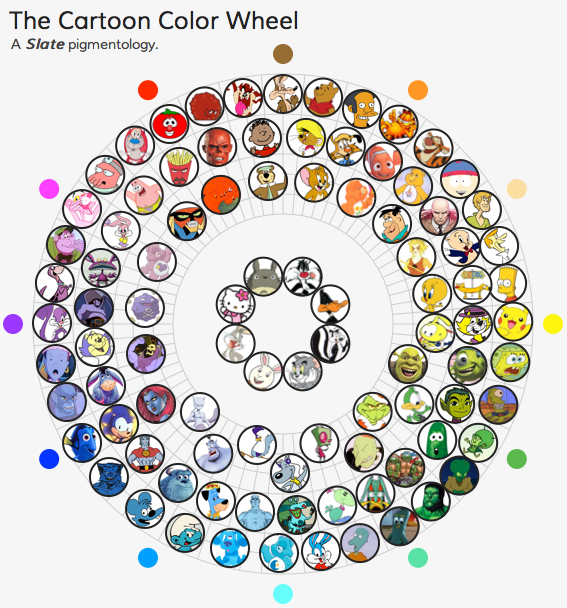
 Visualize This: The FlowingData Guide to Design, Visualization, and Statistics (2nd Edition)
Visualize This: The FlowingData Guide to Design, Visualization, and Statistics (2nd Edition)

